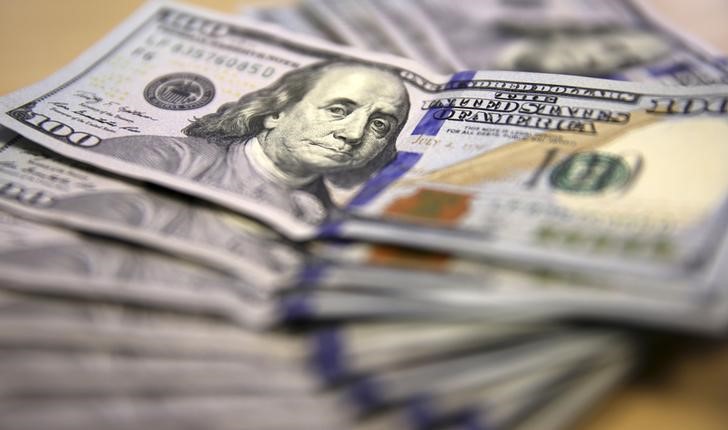


Oil prices and the US dollar have been moving in the same direction recently, deviating from their usual inverse correlation. This unusual positive correlation can be attributed to a combination of factors, including OPEC+ actions and rising interest rates [215eb2a6]. Typically, economic slowdowns in developed economies decrease the demand for crude oil, which reinstates the traditional inverse relationship between oil prices and the dollar. However, Middle Eastern tensions and US job reports further complicate the relationship, making it difficult to predict the future direction of this correlation [215eb2a6]. Despite the current positive correlation, many analysts believe that it is temporary and expect the inverse relationship between oil prices and the US dollar to eventually resume [215eb2a6].
The impact of this unusual correlation between oil prices and the US dollar extends beyond the energy sector. It has implications for the global economy as a whole. The positive correlation suggests that a stronger US dollar could lead to higher oil prices, which can have both positive and negative effects. On one hand, higher oil prices can benefit oil-exporting countries, boosting their revenues and potentially stimulating their economies. On the other hand, higher oil prices can increase costs for oil-importing countries, potentially leading to inflationary pressures and slower economic growth [215eb2a6].
The recent analysis by Bank of America (BofA) provides further insights into the relationship between oil prices and the US dollar. BofA states that higher oil prices are supporting the US dollar. The bank argues that policy responses to inflation have amplified the USD-positive impact of recent supply-driven oil shocks. The nature of the oil shock's supply, including the Russian invasion of Ukraine and concerns about turbulence in the Middle East, has also supported the dollar. The bank's strategists believe that although the nature of the shocks may be temporary, oil is likely to stay a broadly USD-positive force due to its impact on US terms of trade. BofA sees a decline in the dollar in the medium term, with a year-end forecast for the USD/EUR pair of 1.15, but warns about the risks of a dollar rise in the face of high oil prices [7be0a0dd].
Most countries buy oil in U.S. dollars due to safe and liquid markets in the United States. The U.S. dollar is used to buy oil and gas even though countries have their own currencies. The U.S. dollar's dominance in oil markets began after the oil shock of the early 1970s when Saudi Arabia needed a place to invest its surplus money and the American market was a natural choice. The dollar offers safe, broad, and liquid markets, and the U.S. is protected by the rule of law. This logic applies to most commodities, not just oil, and increases demand for U.S. dollars worldwide. However, oil plays a smaller role in this now as Saudi Arabia invests its profits mostly in its own country. While some countries do not use dollars to buy oil, reports of the dollar's imminent demise are exaggerated [238a361c].
The current positive correlation between oil prices and the US dollar is influenced by several factors. OPEC+ actions, such as production cuts or increases, can directly impact oil prices and indirectly affect the US dollar. For example, when OPEC+ reduces oil production, it can lead to higher oil prices, which in turn can strengthen the US dollar. Similarly, rising interest rates in the United States can attract foreign investors, leading to a stronger US dollar and potentially higher oil prices [215eb2a6].
In conclusion, the recent unusual positive correlation between oil prices and the US dollar is a deviation from their usual inverse relationship. While the exact reasons for this correlation are complex and multifaceted, factors such as OPEC+ actions and rising interest rates play a significant role. The impact of this correlation extends beyond the energy sector and has implications for the global economy. Bank of America's analysis suggests that higher oil prices are supporting the US dollar, with policy responses to inflation and supply-driven oil shocks amplifying the USD-positive impact. However, the bank also warns about the risks of a dollar rise in the face of high oil prices [215eb2a6] [7be0a0dd]. Most countries buy oil in U.S. dollars due to the safe and liquid markets in the United States. The U.S. dollar's dominance in oil markets began after the oil shock of the early 1970s when Saudi Arabia needed a place to invest its surplus money and the American market was a natural choice. The dollar's safe, broad, and liquid markets, as well as the protection of the rule of law in the U.S., make it an attractive currency for oil trading and increase demand for U.S. dollars worldwide. However, oil plays a smaller role in this now as Saudi Arabia invests its profits mostly in its own country. While some countries do not use dollars to buy oil, reports of the dollar's imminent demise are exaggerated [238a361c].